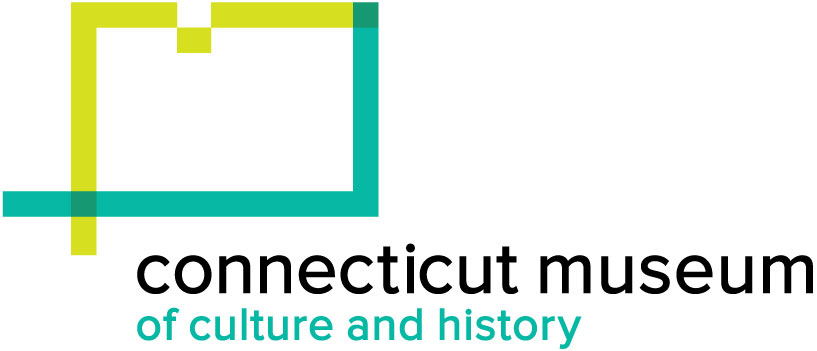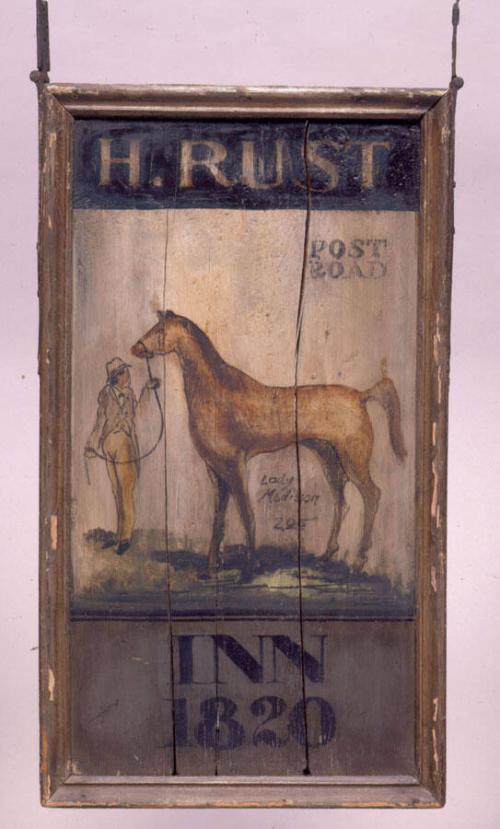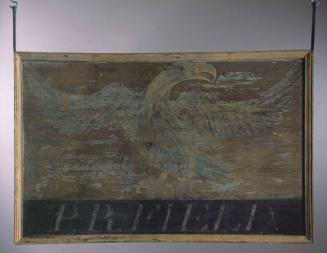Sign for H. Rust
Dateearly 20th century
MediumPaint on pine board and moldings, iron hardware
DimensionsPrimary Dimensions (height x width including hardware): 43 1/2 x 23 1/4in. (110.5 x 59.1cm)
Other (height x width of sign only): 39 1/4 x 21 7/8in. (99.7 x 55.6cm)
ClassificationsPainting
Credit LineGift of the heirs of Morgan B. Brainard
Object number1971.30.2
DescriptionImages: On side 1, profile of standing horse, with person in riding costume holding lead line. On side 2, eagle based on United States seal.
Text: On both sides, in band above the image, "H. RUST', in band below the image "INN / 1820". On side 1, in the image field, above the horse, "POST ROAD", and below the horse, "Lady Madison 2.05". On side 2, in the image field, in banner above the eagle, "E. PLURIBUS UNUM", below the eagle, "POST ROAD".
Construction: Thick, single board, grain oriented vertically. Molding strips, mitered in corners, are nailed to the borders of each face. No structural frame, no pediment or skirt.
Text: On both sides, in band above the image, "H. RUST', in band below the image "INN / 1820". On side 1, in the image field, above the horse, "POST ROAD", and below the horse, "Lady Madison 2.05". On side 2, in the image field, in banner above the eagle, "E. PLURIBUS UNUM", below the eagle, "POST ROAD".
Construction: Thick, single board, grain oriented vertically. Molding strips, mitered in corners, are nailed to the borders of each face. No structural frame, no pediment or skirt.
Collections
Label TextAt first glance, Rust’s sign looks like yet another variation of late 18th- or early 19th-century work. However, the costume of the figure leading the horse strongly resembles artwork on early 20th-century posters and magazine covers. The inscription beneath the horse is believed to be her name and track record, “Lady Madison 2.05.” The signboard, noticeably thicker than most, is likely a fragment from an early building. There is also evidence of an intentional effort to create an illusion of age and weathering through uneven and multi-layered application of paint and varnish.
NotesTechnique Note: The handling of paint is not typical of sign painting technique. Letters and numerals are stenciled. There are four paint layers, all gray, brown or green, as well as a brush-applied "grime/patination" layer and evidence of distressing using sandpaper.Status
On view1814-1820
1790-1820
about 1823
before 1892















